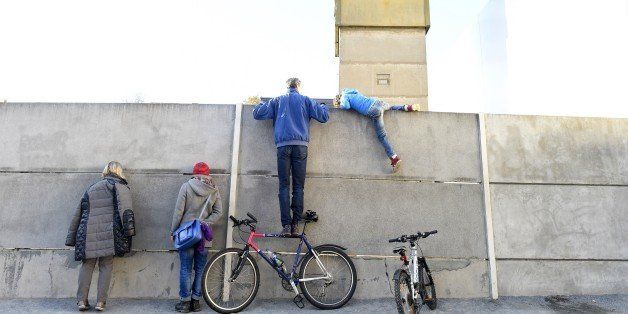
Many historians trace the seeds of the momentous events of November 9, 1989, when the Berlin Wall came down, as being planted back in August 1975 when 35 nations, including the United States, unanimously approved the Helsinki Accords. Helsinki's "Final Act" recognized the sovereignty of East Germany and other Soviet satellites and banned any "armed intervention or threat of such intervention against another participating State." In effect, the Helsinki Accords were an ironclad assurance that neither NATO nor the U.S. would take military action against the Warsaw Pact. It greatly reduced Soviet paranoia that the West might someday attempt to reunify the country by force of arms.
An unexpected consequence of Helsinki was that its seemingly half-hearted and ineffectual safeguards for human rights spawned the "Helsinki Rights" movement. Over the course of the next five or 10 years, the Eastern bloc countries, as well as the Soviet Union, faced an explosion of grassroots clubs, community groups, and individual activists, all demanding that their government honor the human rights pledges laid out in the Helsinki Accords. The organization, "Helsinki Watch," emerged with the express purpose of monitoring and publicizing abuses in signatory states.
The Berlin Wall had its origins in an attempt to stop people from fleeing East Berlin in search of political freedom and a chance for a better life in the West. Once an East German citizen made it into West Berlin he or she could apply for asylum, and many of those who defected were educated professionals, which caused a "brain drain." By 1961, the crisis became so acute that it prompted Soviet Premier Nikita Khrushchev, along with his East German allies, to order the Berlin Wall to be built as a means of stemming the tide.
The edifice itself was an architectural monstrosity with an elaborate system of gun towers, barbed wire, and even a moat made of sand to detect footprints. In the summer of 1962, President John F. Kennedy had delivered one of his most memorable speeches at the city hall in West Berlin, to a crowd of several hundred thousand Berliners. Twenty-five years later, when President Ronald Reagan spoke at the Brandenburg Gate in West Berlin on June 12, 1987, a generation of people had grown up who had difficulty imagining a world where that hideous symbol of human oppression no longer existed.
Despite Soviet Premier Mikhail Gorbachev's reform agenda and the ongoing popular struggles in Eastern Europe, in 1988 East Berlin did not appear to be a city on the brink of a revolution. The pro-Soviet German Democratic Republic (GDR) still routinely dispersed crowds of nonviolent protestors. In January 1988, the Stasi security services arrested over a hundred demonstrators who were simply commemorating the 1919 murder of the revolutionaries Rosa Luxemberg and Karl Liebknecht.
Erich Honecker, the 77-year-old leader of the GDR, flatly rejected Gorbachev's vision of perestroika and glasnost for East Germany. In the spring of 1989, Honecker dug in his heals holding municipal elections where government candidates won 98.8 percent of the vote. But events began moving very quickly after the Soviet-sponsored government in Hungary decided in early May 1989, as part of its own Gorbachev-style restructuring, to turn off the electrified fence that sealed the country's western border.
Officially the Hungarian frontier with Germany was still "closed" but when the news of the relaxed border control became known in East Germany people began flooding across it. In a matter of weeks there were over 25,000 GDR citizens "on holiday" in Hungary, and by early September the number had swelled to 60,000. Thousands of people sought refuge inside the West German embassy in Budapest, and when the government announced it would take no action against GDR nationals going to Austria, about 22,000 more GDR citizens dashed through the border. Following these fast-moving events even a crusty authoritarian like Honecker had to recognize that he had a major public-relations disaster on his hands.
Gorbachev visited East Germany in October to commemorate the fortieth anniversary of its founding and he urged Honecker to move toward greater liberalization. But Honecker made it clear he had no intention of following Gorbachev's reformist path. Within weeks enormous demonstrations broke out in Leipzig and other East German cities and some GDR officials close to Honecker believed that he might be contemplating a "Tiananmen Square"-style solution to the problem. Four months earlier, in June 1989, the Chinese communist government cracked down on pro-democracy protesters killing hundreds of people and jailing thousands.
Believing that Honecker might indeed follow China's lead, GDR authorities, led by Egon Krenze, staged a coup d'etat against the septuagenarian after eighteen years in power. Krenze flew to Moscow to meet with Gorbachev and upon his return promised to implement an East German version of perestroika.
But the East German government was losing control of the situation. Demonstrations in Leipzig grew past 300,000 people, and in early November hundreds of thousands of East Germans were participating in daily protests in the streets of Berlin. Another 30,000 GDR citizens emigrated after Czechoslovakia also relaxed its border enforcement. Then, on November 9, 1989, the Krenze government, in attempt to "stabilize" the situation, agreed to allow East Germans to freely visit West Germany. The announcement, delivered almost inadvertently at a press conference by the GDR's foreign minister, rendered the Berlin Wall obsolete.
People came from all over Europe to help Berliners tear down what had become one of the world's preeminent symbols of police-state oppression. They converged on the Wall with picks and sledgehammers and battered down its ugly concrete edifice as Stasi guards stood by watching. The spectacle of hundreds of joyous people literally demolishing the Wall came to symbolize the power of ordinary people, even in a "totalitarian" state, to forge a new era of political freedom.
By Christmas 1989, one in six East Germans, about 2.4 million people, had crossed into West Berlin to visit friends and relatives or to just look around for the first time. There was a huge shopping spree as GDR citizens voraciously snapped up consumer goods that had been denied them under the stagnant economy of the East. The path had been cleared for reunifying Germany that had been split in half since the end of World War Two, and the unification of the country came less than a year after the Wall came down (on October 3, 1990).
